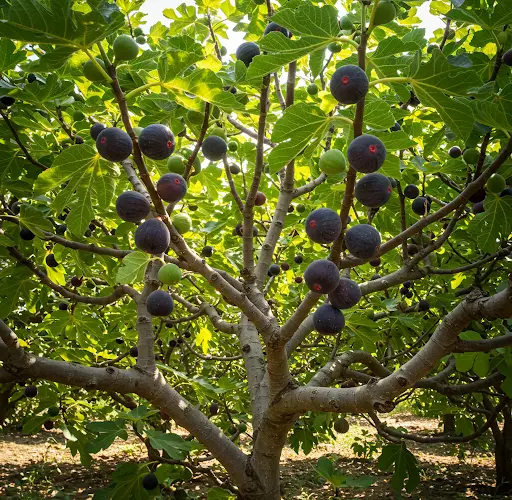Growing a fig tree at home is an excellent way to enjoy delicious fruit while adding beauty to your garden. Figs can be eaten fresh when ripe or used to make preserves and sweets. Additionally, fig sap has traditional uses for treating warts and skin blemishes.
Choosing the Right Container
A fig tree can be grown in various containers, including a 10-liter pot, an 18-liter paint can, or a 20-liter container. The key is to ensure proper drainage and provide enough space for root growth. Watering should be done two to three times per week.
Propagating a Fig Tree
- Selecting a Cutting: Choose a healthy branch with a small leaf attached. This will serve as the starting point for a new plant.
- Rooting the Cutting: Place the cutting in a liter of water mixed with a rooting agent. You can use natural alternatives like lentil or bean sprout water or a store-bought rooting hormone. Leave the cutting in the solution for six to seven days to encourage root development.
Preparing the Fertilizer Mix
- Chicken Manure: This is rich in nitrogen and should be well-aged for at least 30 days before use. It can be purchased dry from gardening stores.
- Alternative Fertilizers: If chicken manure is unavailable, cattle manure can be used. However, its nitrogen content is lower, so the quantity should be doubled.
- Wood Ash: This provides essential phosphorus, potassium, and calcium, which help strengthen the plant and promote fruiting. If using charcoal ash, ensure it is pure and not contaminated with fat, salt, or other residues from cooking.
Mixing the Fertilizer
- Use two tablespoons of aged chicken manure (or four tablespoons if using cattle manure).
- Add one heaping tablespoon of wood ash.
- Mix thoroughly to create a well-balanced nutrient source for the fig tree.
Applying the Fertilizer
- Digging a Small Trench: Make a small hole about four fingers away from the base of the plant.
- Adding the Fertilizer: Sprinkle one small bottle cap full of the mixture into the trench.
- Covering and Watering: Cover the hole with soil and water the entire container thoroughly.
Frequency of Fertilization
- Apply this fertilizer once every 30 days.
- For a 20-liter pot, use one bottle cap full per application.
- For a 40-liter pot, use two bottle caps.
- For an 18-liter container, one bottle cap is sufficient.
- The same amount applies to a 10-liter pot.
Seasonal Considerations
During winter, fig trees naturally shed their leaves. Consistent fertilization ensures the plant has enough nitrogen to regenerate its foliage in spring. This supports photosynthesis and enhances fruit production. The wood ash component balances the soil’s pH and strengthens the tree’s structure, making it more resilient and productive.
Final Thoughts
Fig trees are excellent for container gardening and can produce abundant fruit with proper care. Regular fertilization using natural ingredients enhances growth and fruit yield, making it an easy and effective gardening practice. With the right approach, anyone can successfully grow and maintain a healthy fig tree at home.



